MITS4003 Database Systems Assignment: Data Mining Presentation Report
VerifiedAdded on 2023/04/23
|8
|337
|274
Presentation
AI Summary
This presentation provides an overview of data mining, defining it as the process of extracting useful and hidden analytical information from data, also known as Knowledge Discovery in Databases (KDD). It highlights the uses of data mining in determining practices, reducing costs, providing meaningful patterns, and converting data into information through multi-dimensional approaches like machine learning, soft computing, data visualization, and statistics. The presentation outlines the steps associated with KDD, including data cleaning, integration, selection, transformation, data mining, pattern evaluation, and knowledge representation. It further classifies data mining into anomaly detection, association rule learning, clustering, classification, regression, and summarization. The presentation also touches upon the applications of data mining in market analysis, corporate analysis, risk management, and fraud detection. References to relevant academic papers and books are provided to support the content.
1 out of 8

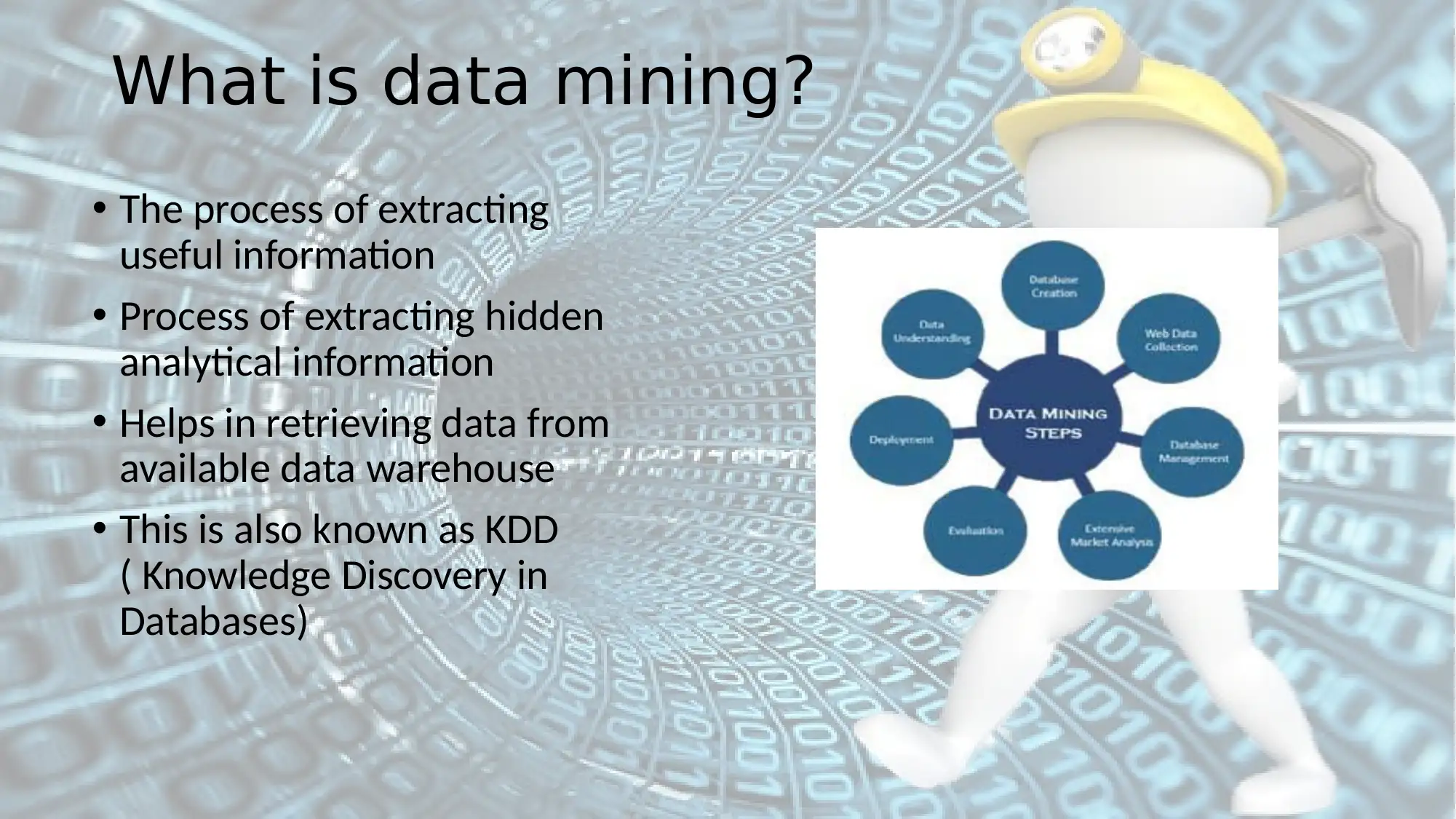


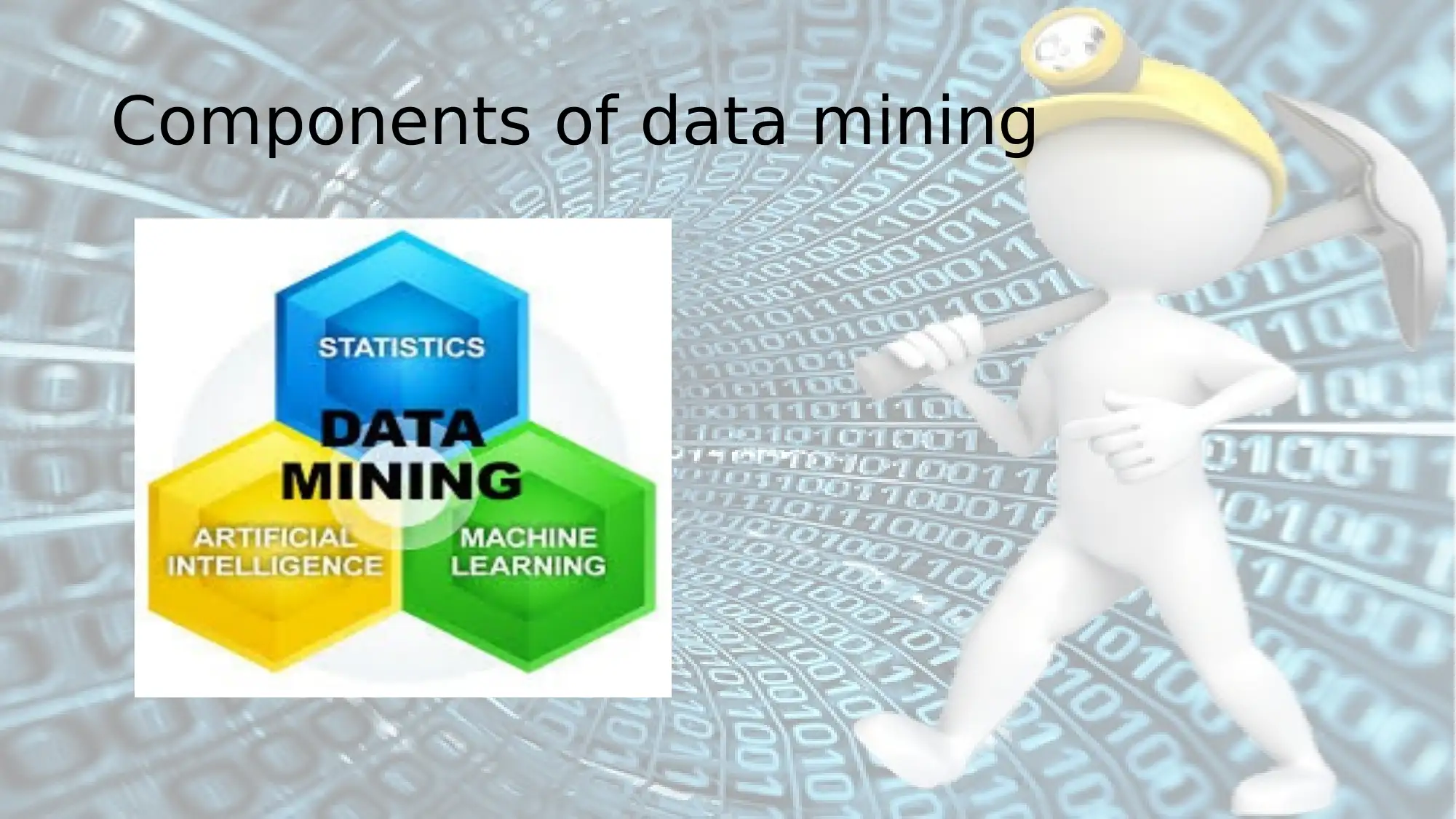
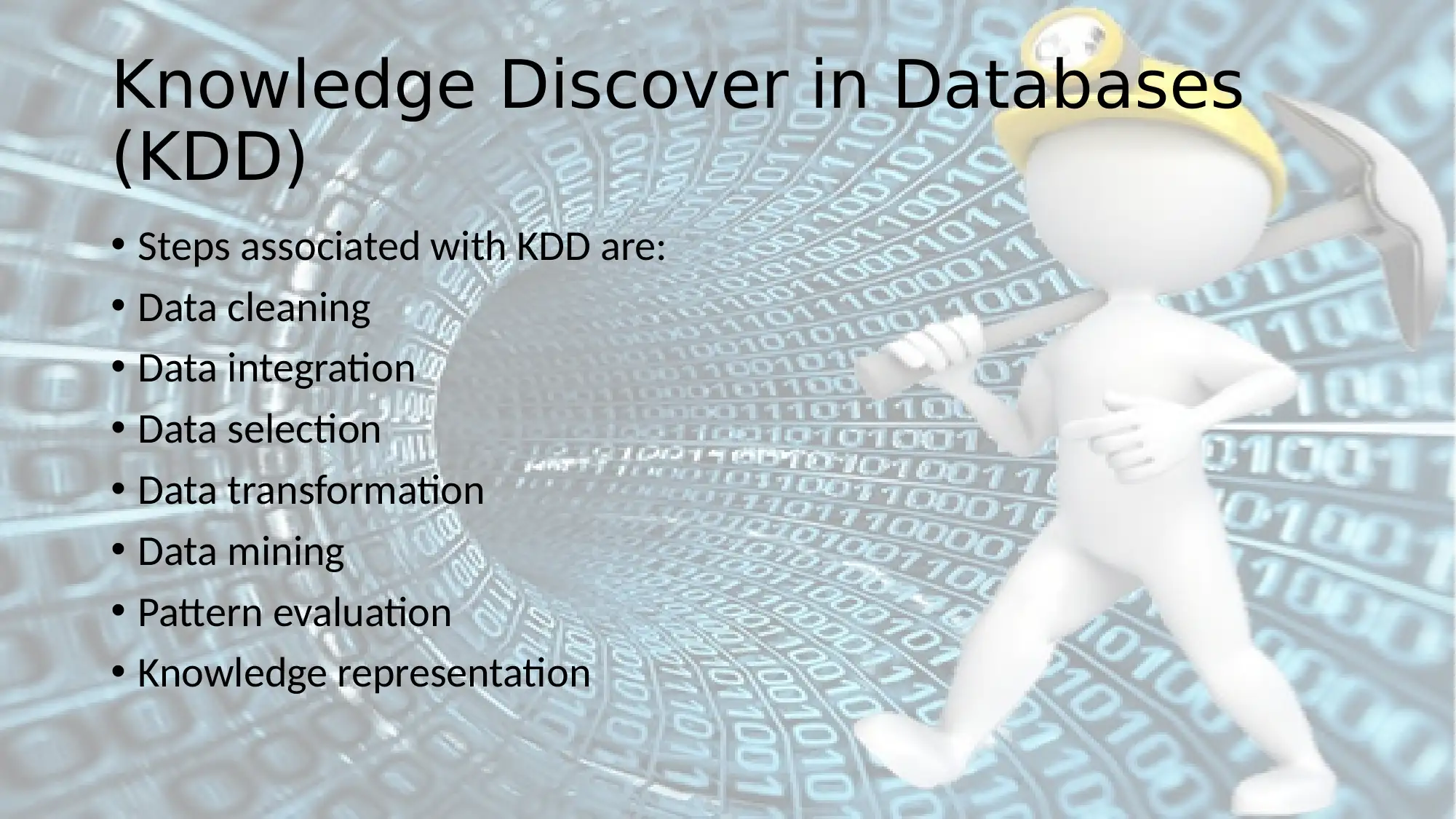
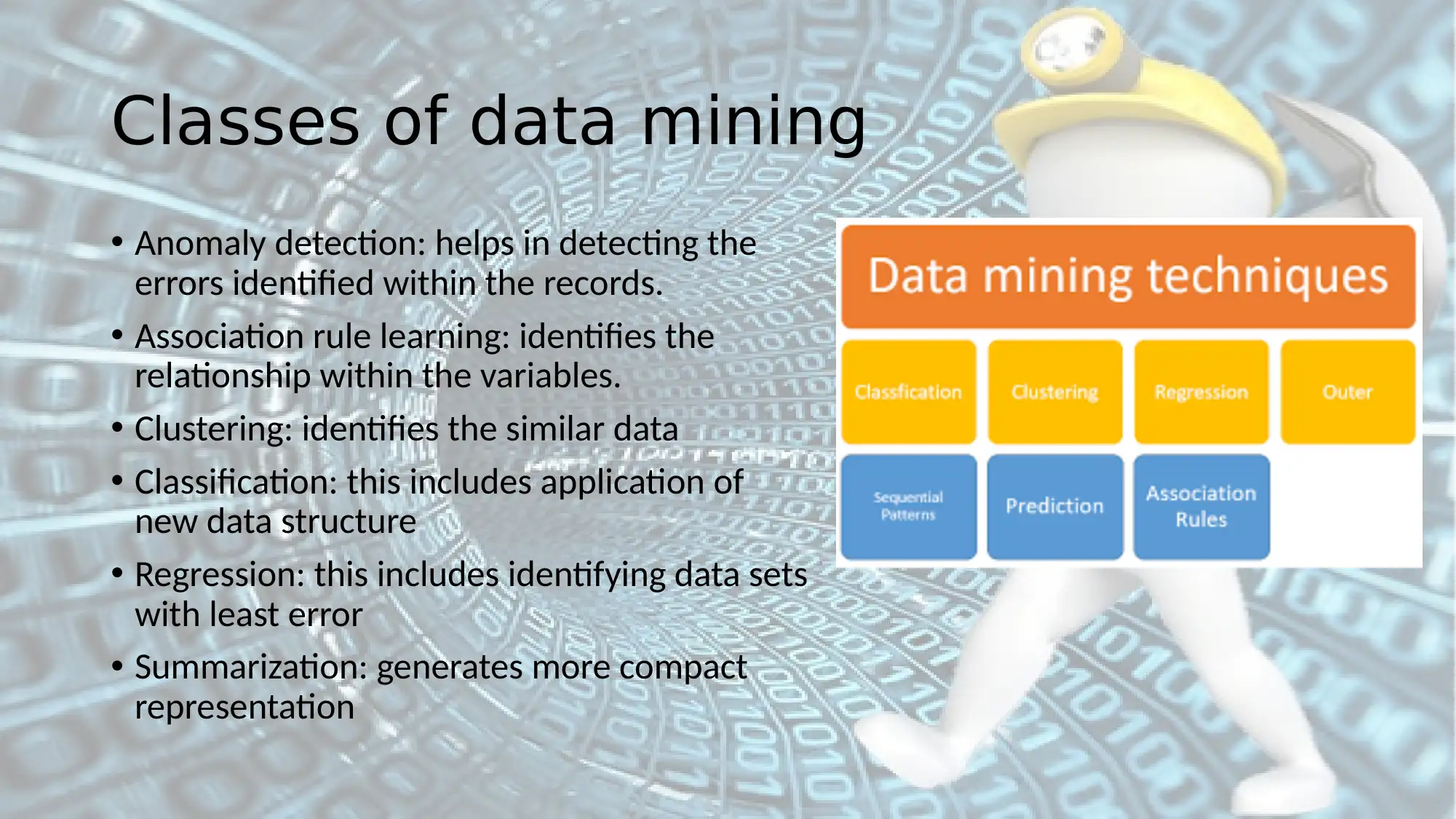
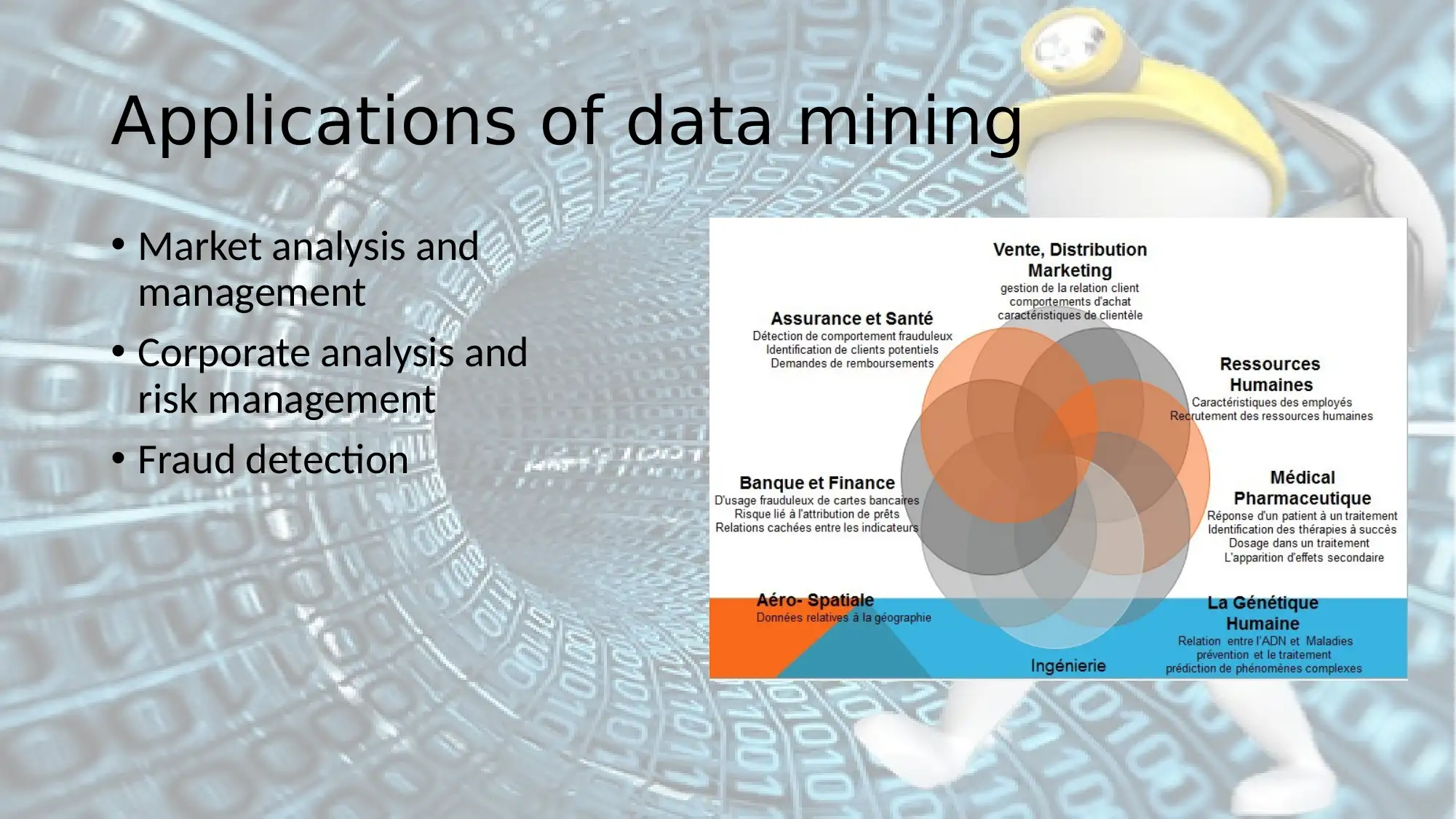
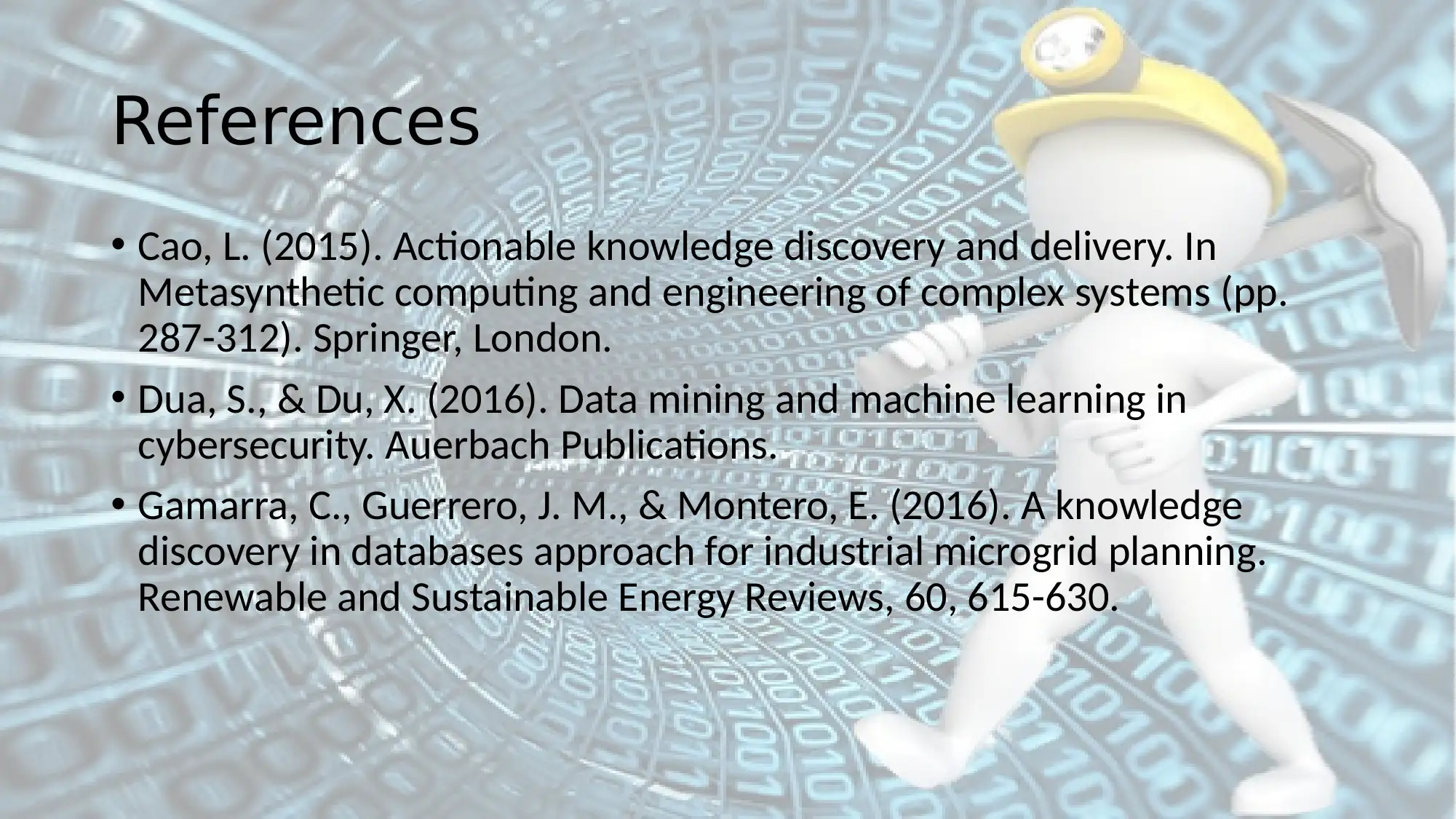






![[object Object]](/_next/static/media/star-bottom.7253800d.svg)